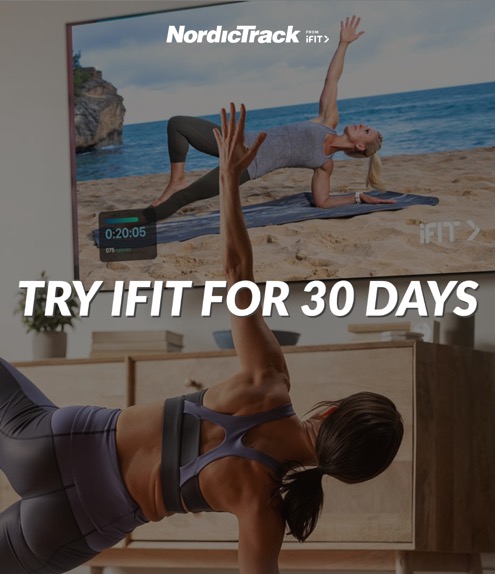
You do not need a gym full of machines to build real strength. In fact, some of the most effective workouts start with just your body weight, your breath, and your focus.
That is the beauty of mat Pilates, an accessible, beginner-friendly way to strengthen your core, improve posture, and feel more confident in movement.
If you have been searching for a workout that feels low-pressure yet delivers lasting results, this guide will help you understand why mat Pilates might be your perfect starting point.
What Is Mat Pilates?
Mat Pilates is the foundation of all Pilates practice. It uses gravity and body weight as resistance to target your deep core muscles, improving stability, mobility, and total-body alignment³.
You will move through a series of controlled exercises, such as the hundred, single-leg stretch, and roll-up. Each focused on quality of movement rather than quantity of reps. Every exercise connects breath to motion, helping you build strength and awareness at the same time.
Mat Pilates is gentle on the joints but powerful for muscle control. Over time, you will notice better balance, improved coordination, and greater body awareness.
To make getting started simple, iFIT offers on-demand Pilates classes you can do right from home, including official Club Pilates sessions led by expert instructors such as Jeni DelPozo.
Why Beginners Thrive with Mat Pilates
One of the reasons Pilates is so effective is that it meets you where you are. You can begin with basic movements and gradually progress to more complex routines as your strength and coordination improve.
According to the Mayo Clinic, strong core muscles are essential for balance, stability, and posture¹. They also protect your spine and support nearly every movement you make. When your core becomes stronger, daily tasks like carrying groceries or sitting for long hours feel easier and less tiring.
The Heart Research Institute notes that building a stable core helps align the pelvis and spine, making your movements more efficient and reducing strain on joints². Mat Pilates builds that alignment naturally, using precise, low-impact control instead of external weights.
This is what makes it such a confidence-building method for beginners. You gain strength you can actually feel in your everyday life.
How Mat Pilates Strengthens Your Core
The magic of Pilates lies in the details. Each slow, intentional movement activates stabilizing muscles that traditional workouts often overlook.
Research shows that consistent Pilates training:
- Strengthens the deep abdominal and back muscles⁵
- Activates core stabilizers that protect spinal alignment⁴
- May support improved flexibility and reduced discomfort associated with back issues⁴
- Increases endurance and control through repetition and breath⁵
- Improves balance and coordination in functional movement⁶
These effects do not happen overnight, but within a few weeks of practice, most people notice improved posture, better movement quality, and more awareness of how their body works.
Small progress adds up, and Pilates makes that progress become your new foundation for strength.
Easy Ways to Begin at Home

Getting started with mat Pilates does not require much space or equipment. All you need is:
- A supportive, non-slip mat
- Comfortable clothes that allow full movement
- A quiet space where you can focus on form and breath
Set aside 15 minutes, choose a beginner-friendly program, and start with the basics.
On iFIT, you can follow certified instructors through guided sessions that teach core engagement, proper breathing, and alignment. These workouts are designed to progress gradually, so you can feel stronger week by week without feeling overwhelmed.
If you prefer variety, try mixing short Pilates flows between low-impact treadmill walks or elliptical sessions on your NordicTrack equipment. This helps reinforce posture and builds endurance without overtraining.
Building Strength with NordicTrack and iFIT
Pilates gives you stability. NordicTrack helps you move that stability into action.
On the NordicTrack Commercial 1250 Treadmill or X16 Incline Trainer, iFIT’s SmartAdjust technology automatically adapts your incline and speed to match your effort. This dynamic movement challenges your balance and engages your core with every step.
Alternating between short incline walks and Pilates sessions creates a complete, low-impact training cycle. Over time, you build strength, mobility, and confidence that extend beyond your workouts.
Looking to Take Your Practice to the Next Level?

Once you’ve built confidence on the mat, you may start craving a little more challenge and variety. That’s where a reformer comes in. The new machine is a smooth, resistance-based system that brings your Pilates movements to life in three dimensions.
At the forefront of this evolution is the Ultra 1 Reform RX-S, the first connected Pilates reformer built to deliver a truly interactive experience. With smart resistance tracking, real-time feedback, and a sleek 21.5-inch touchscreen, it helps trainers and members alike move with precision and flow.
While the current model is designed for professional studios, it offers a glimpse of what’s ahead with a more adaptive, immersive, and connected Pilates experience that brings studio-quality innovation closer to home. Stay tuned for what’s next.
The Takeaway
Mat Pilates proves that strength starts small. It does not demand heavy weights or complicated routines, only focus, patience, and practice. Each movement reconnects you to your body, helping you stand taller, move with control, and feel capable in your everyday life.
Start where you are. Practice consistently. With every session, you will build core strength AND confidence that carries into everything you do.
FAQ: Mat Pilates for Core Strength
Mat Pilates strengthens your abdominal, back, and hip muscles, often called the “powerhouse”³.
Begin with two to three sessions per week to build consistency and control⁵.
Yes. It is gentle, low-impact, and easily adaptable to any fitness level².
No. A mat and a little space are all you need³.
You may notice improved posture and stability within four to six weeks of regular practice⁵.
Yes, especially for beginners. It improves muscular endurance and balance⁴.
Some studies suggest that Pilates can enhance core stability, which may help support back health. If you experience ongoing pain or have a medical condition, consult your healthcare provider before starting a new workout routine.
Form-fitting, flexible clothes that allow full range of motion work best.
Absolutely. It pairs perfectly with low-impact cardio like walking or elliptical training¹.
Follow guided sessions on iFIT, track your progress, and celebrate small improvements each week.
Explore More
- Build Stability, Balance, and Better Movement with Pilates
- Pilates vs Cardio: Which Builds a Stronger, Healthier You
- Beginner Plan to Get Strong at Home
- Explore Boutique Fitness Favorites with Club Pilates on iFIT
- Find Your Strength and Flow in Jeni DelPozo’s Pilates Series
References
- Mayo Clinic. Core Exercises: Why You Should Strengthen Your Core Muscles.
- Heart Research Institute. Core Strength: Why Is It Important and How Do You Maintain It?.
- Journal of Bodywork and Movement Therapies. Pilates Uses a Combination of Exercises to Improve Flexibility, Posture, and Stability.
- Frontiers in Physiology. Pilates to Improve Core Muscle Activation in Chronic Low Back Pain: A Systematic Review.
- Journal of Bodywork and Movement Therapies. Effects of Pilates Exercise on Trunk Strength, Endurance and Flexibility in Sedentary Adult Females.
- Frontiers in Physiology. Comparisons of Functional Movements and Core Muscle Activity in Women According to Pilates Proficiency.
Disclaimer: The primary purpose of this blog post is to inform and entertain. Nothing on the post constitutes or is intended to be a substitute for professional medical advice, prevention, diagnosis, or treatment. Reliance on any information provided on the blog is solely at your own risk. Always seek the advice of your physician or other qualified health provider with any questions you may have regarding a medical condition, and please consult your doctor or other health care provider before making any changes to your diet, sleep methods, daily activity, or fitness routine. Do not disregard professional medical advice or delay seeking it because of information available on this blog. NordicTrack assumes no responsibility for any personal injury or damage sustained by any recommendations, opinions, or advice given in this article. Always follow the safety precautions included in the owner’s manual of your fitness equipment.


